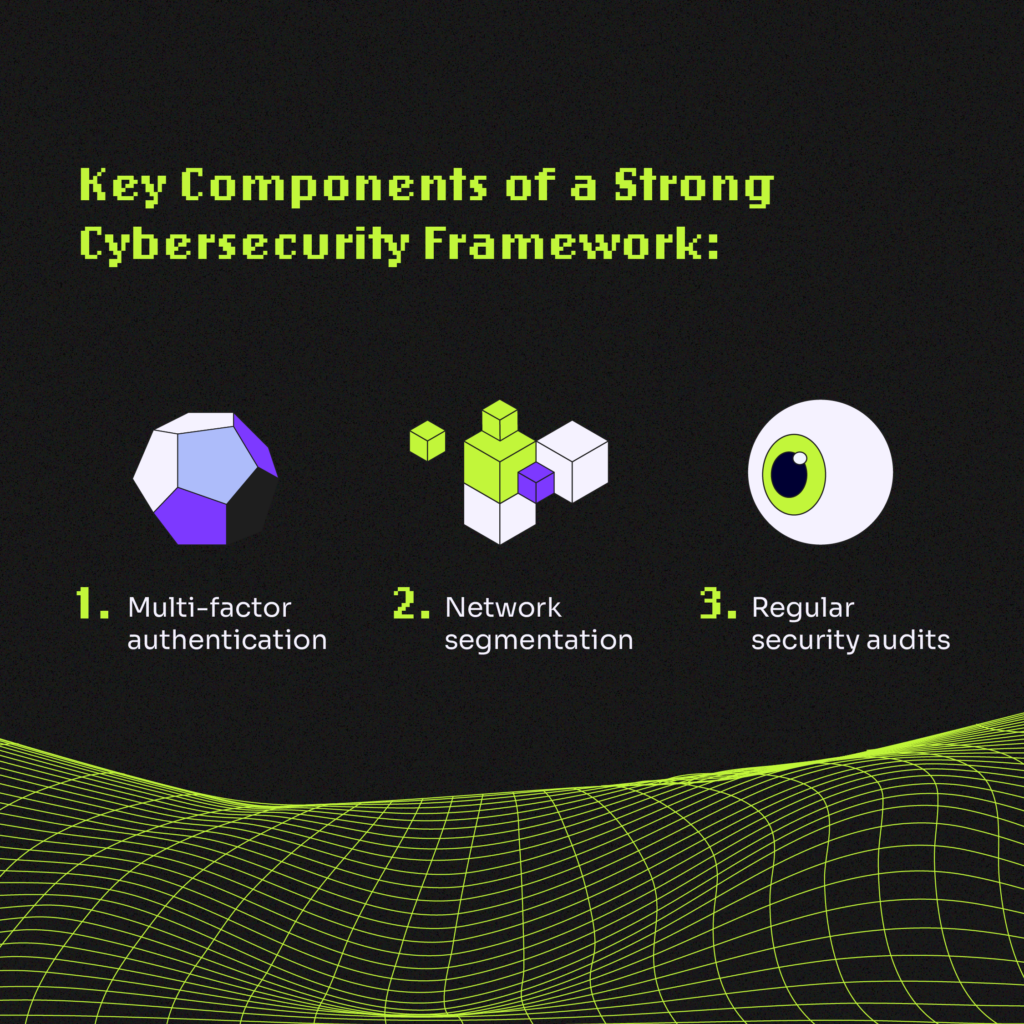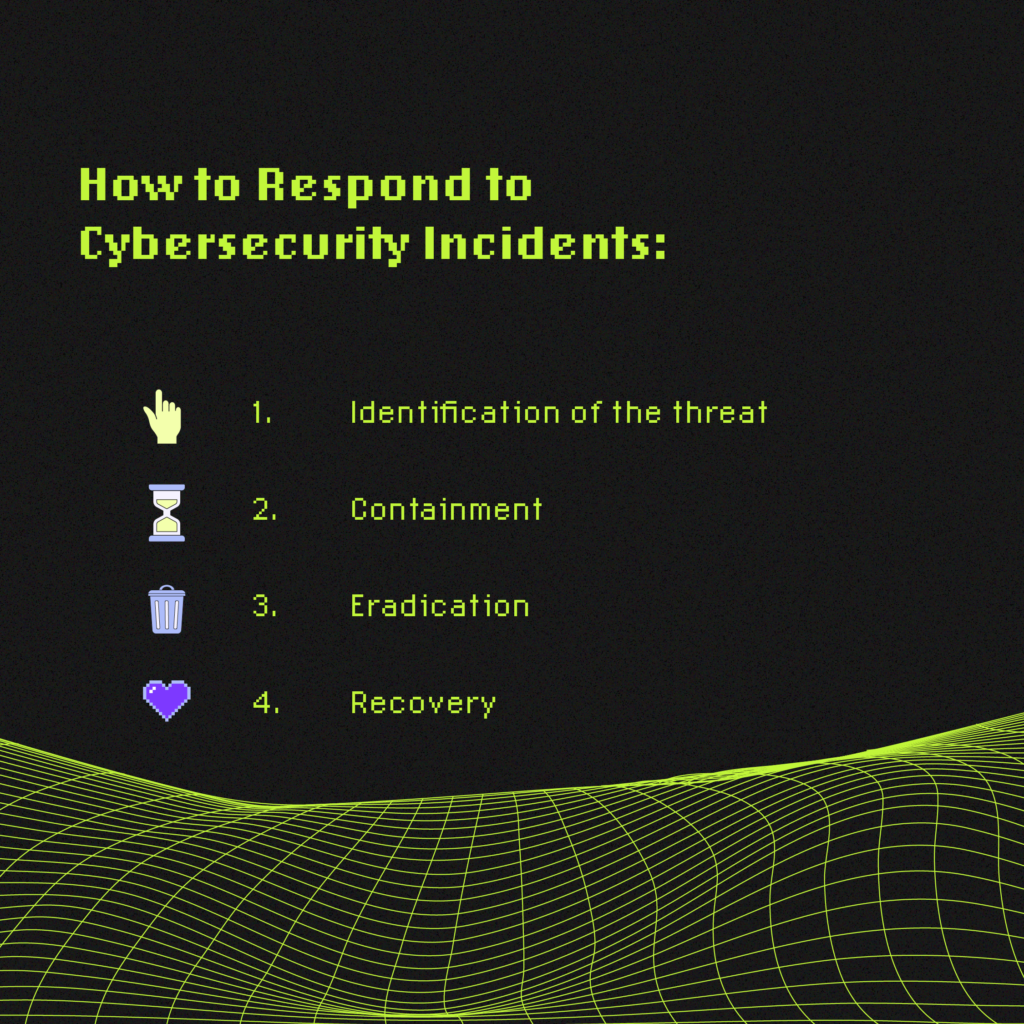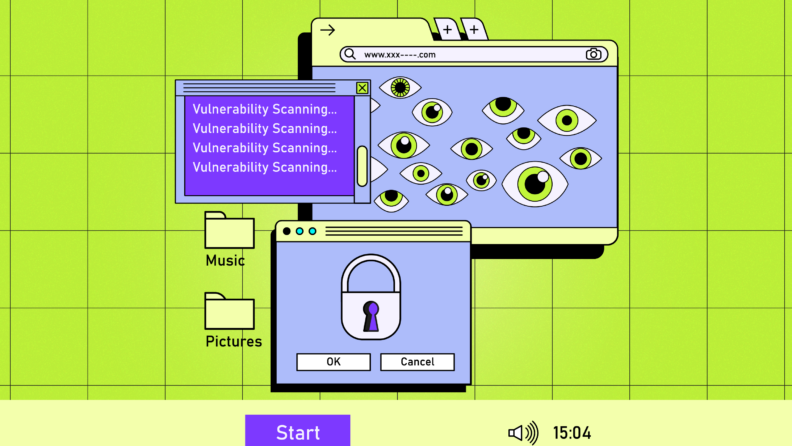Cybersecurity refers to the practice and techniques used to protect computer systems, networks, and data from unauthorized access, attacks, or damage. It is often viewed as a given for large enterprises, with their extensive resources and high stakes in protecting vast amounts of sensitive data.
However, its importance for small businesses cannot be overstated. While smaller in scale, these businesses are equally vulnerable to cyber threats, yet often lack the robust defense mechanisms of larger corporations. This makes them attractive targets for cybercriminals.
Understanding and implementing effective cybersecurity measures is crucial for small businesses to protect their data, maintain customer trust, and ensure the continuity of their operations in an increasingly digital world.
Let's explore practical measures to safeguard sensitive information and guard against scams, equipping you to tackle significant cybersecurity challenges that have laid low more than a few companies bigger than yours.
Understanding Cybersecurity in the Small Business Context
Small business owners have unique needs for cybersecurity. While you may have started with off-the-shelf antivirus software, which was good enough when you had a local network and a few laptops, things change as you grow.
Defining Cybersecurity for Small Businesses
Believe it or not, you've got coin-toss odds of having had a cybercrime attack in 2023. Roughly 48% of small businesses have gotten hit in the last year. This may come as a surprise to many business owners who believe their data and customer information are secure and untouched by cybercriminals. However, these figures suggest that the threat is real and widespread, affecting a substantial number of small businesses.
Do you use mobile devices for business? How do you know you're not running harmful software on apps you can't see? Does your office computer run a commercial operating system like Windows? Are you running a sophisticated firewall program? Hope it's not one of the 12,000 enterprise-grade firewalls that were just discovered to be vulnerable to viruses and spyware.
Why Small Businesses Are Attractive Targets for Cyberattacks
Small businesses are special targets for cyberattacks because of unfortunate coincidences. First, high-octane cybersecurity tends to be a little out of reach for the smaller players, leaving them vulnerable to determined phishing attacks, ransomware attacks, and the like.
Second, even if you're small, you could still have access to attractive customer data (see: credit card information) that's worth stealing.
Common Cybersecurity Misconceptions Among Small Businesses
By far, the biggest misconception is that a solid cybersecurity strategy is too expensive. That's not true for several reasons. First, with the average data breach costing north of $4.5 million, nothing you pay for on the front end is too expensive.
As a rule, having a decent cybersecurity plan isn't really that costly. Plenty of endpoint protection tools are on the market – ideal for protecting small businesses from malware and certain types of common cyberattacks.
Assessing Your Small Business Cybersecurity Needs
Every small business has its own needs, and you probably know your own situation better than anybody else. Even if you're in overall good shape, your cybersecurity plan could probably still use some tweaking.
Evaluating Current Security Measures
Before you can make a change, you need to know what needs changing. That means you're starting with an evaluation of your current cybersecurity risks. Try to judge what you currently have against the Center of Internet Security (CIS) controls. This is a standardized and prescriptive set of best practices for improving your cybersecurity posture.
ISO/IEC 27001 is another standard you can judge your security setup against. This is a more comprehensive standard that considers the role people, processes, and technology play in your total security procedures and risk assessment.
Identifying Vulnerable Areas in Your Infrastructure
No matter how good your cybersecurity setup happens to be, you still have weaknesses that hackers can exploit. Poor password management, unencrypted data transmission, and several other common weak points are favorites for unauthorized users.
The Role of Risk Assessment in Cybersecurity Planning
Let's say you've evaluated your cybersecurity framework and spotted potential soft points. You've initiated multi-factor authentication for all your company's social media accounts, and you now use a VPN to buy groceries online. Unfortunately, you're still not in the clear – the threat is constantly evolving.
Good cybersecurity is an ongoing process that includes dynamic risk assessment and continuous improvement. Processes must be built into the input-output cycle to ensure you're close to staying ahead of the curve in an ever-evolving threat environment.
Building a Cybersecurity Framework For Your Business
Chaos is bad for business. That's as true in cybersecurity as anywhere else, so you need a proper rational framework for your network security architecture. Here's how to do that.
Key Components of a Strong Cybersecurity Framework

There are a few features every well-designed cybersecurity framework has. Picking a strong password is one of the most obvious, and it's something everybody on your team can do. First, tell your team to stop using "P4ssword" as their password. Other smart moves on the framework level include:
- Multi-factor authentication
- Network segmentation
- Regular security audits
Customizing Cybersecurity Protocols to Your Business Needs
A small business is much more likely than a medium-sized or large business to have niche needs. Unique needs demand a custom framework solution that's tailored directly to your business goals.
Best Practices for Implementing Your Cybersecurity Plan
You didn't start your business on a Monday and grow to your current size by Wednesday. So why would you expect to roll out an intact cybersecurity framework all at once? Instead of trying to bite the entire apple at once, consider a phased rollout. You could, for instance, pick out a critical area of weakness, such as that "P4ssword" situation, and solve that single issue with staff security training. After that, you can move on to improving physical security for your servers, possibly followed by a new authentication protocol, and so forth.
Cybersecurity Tools and Technologies For Small Businesses
Here are some of our favorite picks for cybersecurity software, along with a note about why you might consider them:
- Sprinto - Great security for businesses in tightly regulated industries such as finance.
- Barracuda Phishing and Impersonation Protection - Solid anti-phishing software.
- Dynatrace - Try this if you use a lot of mobile apps.
- Azure Sphere - Best for IoT.
- Amazon CloudWatch - Best for AWS.
- Datadog - Good for schools and universities.
- Sophos - Best for small businesses overall.
- NetScout - Decent protection from DDoS attacks.
Leveraging Cloud Services for Enhanced Security
One way to hit the cheat code on enhanced cybersecurity is to move everything into the cloud. Amazon Web Services (AWS) and Microsoft Azure are great for doing this, as they both come at a reasonable price and have gentle learning curves. Because these are some of the biggest cloud providers in Cybertron, they also pack quite a hefty security package, letting you punch far above your weight class against cybersecurity threats.
The Importance of Regular Software Updates and Patches
Security software is only as good as its latest version. No matter how you're structuring your infrastructure, make sure you're working with the latest patch. Cloud services will take care of this for you automatically, but if you're using a local host, you need to check for updates regularly.
Cultivating a Cybersecurity Mindset Among Your Team
Strong security protocols are great and all, but what's it good for if a hacker just calls your HR manager and asks for a temporary password? Social engineering efforts like this are still maddeningly effective. This is why you need to inculcate a security mindset in your teams.
You can do this with scheduled (and surprise!) phishing efforts aimed at various employees chosen at random. This is a great learning opportunity and keeps employees on their toes. Try to develop a template that's easy for non-techies to follow for dealing with malicious emails. Include the template in every policy the company develops.
To cultivate your understanding of how to counter these threats, exploring a range of insightful cybersecurity books can provide foundational knowledge and advanced strategies essential for any tech leader's arsenal.
Responding to Cybersecurity Incidents

You can be as careful as you like, but eventually, something bad will happen. When it does, you need a critical incident response plan. This starts with a standard set of steps:
- Identification of the threat
- Containment
- Eradication
- Recovery
Post-Incident Analysis and Strengthening Measures
When the incident is over, it's time to assess the damage and recover. Make sure you schedule a debriefing to identify what has gone right and where everybody could improve. Think of a failed penetration attempt as a free training seminar played for keeps.
Securing Your Future
Cybersecurity is a vital component of businesses of every size. The really powerful tools aren't just for the bigger players, though. Staying ahead of these threats requires not only up-to-date knowledge but also a community of informed leaders sharing insights and strategies.
Even if you're taking your time and doing a slow rollout of your cybersecurity practices, there's almost certainly room to improve within your budget. There are many noteworthy (and free) cybersecurity resources available for you to learn more.
Do you know what else is within your budget? Our newsletter. It's free! Join our newsletter for expert advice and cutting-edge solutions in cybersecurity.



